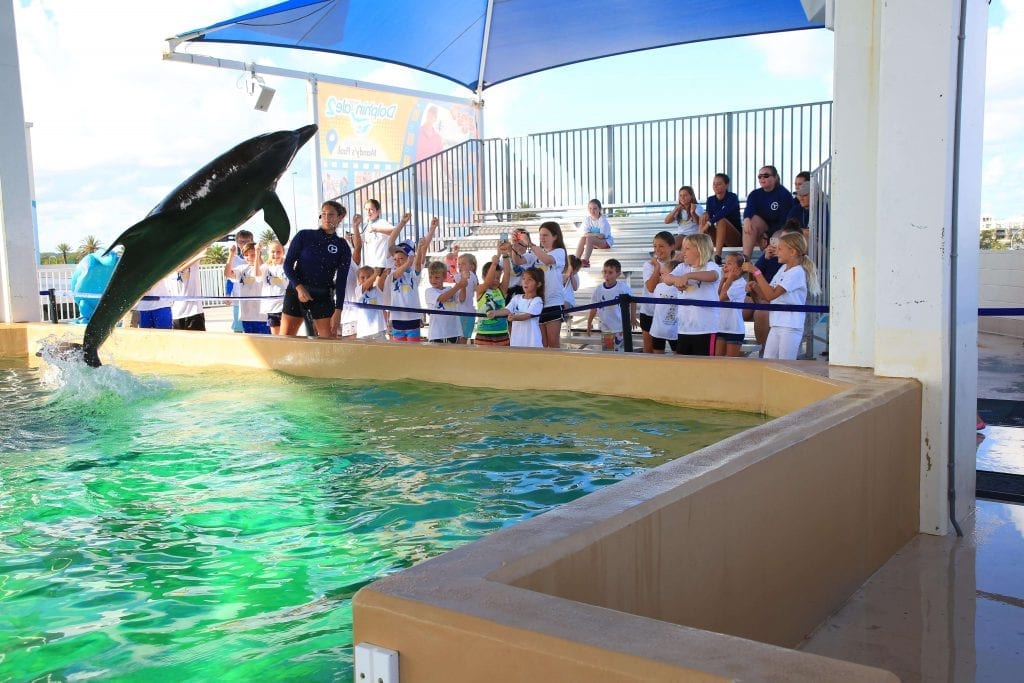

Animals with a stimulating and enriching environment are healthier and happier.This article needs additional citations for verification.A successful enrichment program encourages “species appropriate” behavior by imitating the challenges found in nature.Activities that encourage digging, changing swim patterns, foraging for food items, interacting positively with other animals and stimulation of the senses afford the animals a sense of choice and control over their environment and ultimately reduce the frequency of abnormal behavior.If animals are not challenged with a variety of activities, they risk developing abnormal behavioral patterns. Under human care, predictable life patterns create the need for enrichment as a critical component of every animal husbandry program.

In the wild, animals face risks, challenges and choices throughout their lives. If release is not possible, it becomes a permanent member of the CMA resident family and serves as an ambassador for its species, to help us promote environmental conservation. Our ultimate goal is to release all animals back into the wild but sometimes that it would not be in the animal's best interests.For example an animal may have an injury that, once healed, prevents it from effective food collection or escape from predators.Some very young animals may be separated from their parent too early and are thus unable to learn survival skills to flourish on their own.ĬMA works with agencies such as National Marine Fisheries and Florida Fish and Wildlife Conservation Commission to determine if an animal can be released.Once the animal arrives at our hospital, CMA biologists, veterinarians and volunteers create a rehabilitation plan specifically targeted to its injury or illness.We have a 24-hour emergency stranding line (72, ext.Most of our animals were found by local residents, fishermen, park rangers or visitors to the area.

Every animal that comes through our doors arrives because it was found suffering from an illness or severe injury in the wild. We have released more than 60,000 sea turtle hatchlings into the Gulf of Mexico since 2005.ĬMA is dedicated to the rescue, rehabilitation and release of sick and injured marine animals. Our monitoring area averages 120 nests per season with each nest containing a range of 100 to 110 eggs. Nesting begins in May and the last nest will usually hatch by the end of October. When the hatchlings emerge, we ensure they make it safely to water. When the nests are ready to hatch, they are covered and monitored from 10 pm until 2 am.We also GPS-locate the nest for study and daily observation. Once we find these tracks, we locate the egg cavity and mark off the nest site for further observation. Staff, interns and volunteers are trained to recognize the tracks left behind by nesting females. We take early morning patrols to locate new nesting sites and late night patrols to check existing nests for hatchlings.We have been selected by Pinellas County to monitor nearly 26 miles of coast line to report on any sea turtle nesting activity. The dual mission of releasing injured and sick turtles back into the wild, while ensuring as many hatchlings as possible, helps to save these species from extinction.Our educational programs include school field trips, classroom visits, on-site class programs, custom remote broadcasts, sleep overs, camps and industry education. They connect, they give to us, they inspire. What we have realized through Winter, is that our mission does so much more than rescue the animals, it saves the lives of the people they touch. The work we do to save animals, the strength of our animals to overcome monumental obstacles, the lives we change. When this isn’t possible, we provide long term residential care.

We rescue and rehabilitate injured and ill animals with the aim of releasing them back into their natural habitat. We protect the growth of the endangered sea turtle population by guarding a 26-mile stretch of beach within Pinellas County. We collaborate on scientific research to better understand animal behavior, illness, treatment and the prevention of animal decline. We educate young people on the preservation and conservation of our animals and environment. We inspire the human spirit, through the animals and their stories of survival, which touch all of us. Clearwater Marine Aquarium is fundamentally a hospital for sick and injured marine life.


 0 kommentar(er)
0 kommentar(er)
